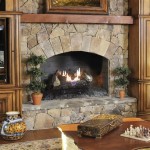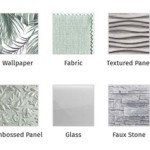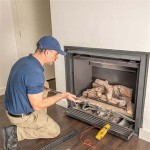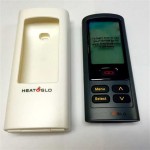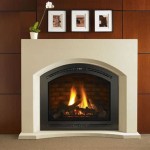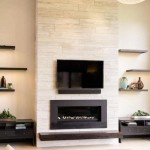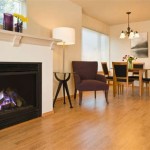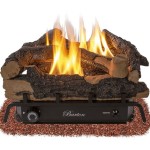Direct Vent Freestanding Gas Fireplace: A Comprehensive Guide
A direct vent freestanding gas fireplace provides a convenient and efficient heating solution for residential spaces. These fireplaces offer the aesthetics of a traditional wood-burning fireplace without the associated hassles of wood storage, ash removal, and complex venting systems. This article will explore the features, benefits, installation considerations, and maintenance requirements of direct vent freestanding gas fireplaces, offering a comprehensive understanding of this popular heating appliance.
Direct vent technology distinguishes these fireplaces from other gas fireplace types. A direct vent system utilizes a sealed combustion chamber connected to a dual-walled pipe that vents directly to the outside of the building. This system draws combustion air from outside and expels exhaust gases back outside, ensuring a safe and efficient operation within the living space. This eliminates the need for a traditional chimney and minimizes heat loss, contributing to improved energy efficiency.
Freestanding models, as the name suggests, are designed to be placed directly on the floor, offering flexibility in placement and installation. They do not require a pre-existing fireplace opening or extensive structural modifications, making them suitable for retrofitting into existing homes or incorporating into new construction projects.
Understanding Direct Vent Technology
The core of a direct vent freestanding gas fireplace lies in its direct vent system. This system relies on a coaxial or concentric pipe arrangement. The inner pipe expels exhaust gases, while the outer pipe draws in fresh air for combustion. The balanced pressure resulting from this design ensures complete combustion and prevents backdrafting, eliminating the risk of carbon monoxide entering the home.
This sealed combustion process offers several advantages over other venting methods. Firstly, it improves energy efficiency. Because the air used for combustion is drawn from outside, the fireplace doesn't consume heated air from the room. This prevents the fireplace from creating a negative pressure environment, which can lead to drafts and increased heating costs.
Secondly, the sealed design minimizes the risk of indoor air pollution. By completely isolating the combustion process from the living space, harmful byproducts like carbon monoxide, nitrogen dioxide, and particulate matter are safely vented outside. This makes direct vent fireplaces a safer and healthier heating option compared to vent-free or B-vent models.
Thirdly, direct vent systems offer greater installation flexibility. The vent pipe can be routed horizontally or vertically, allowing the fireplace to be installed in various locations within the home, even on interior walls. This versatility expands design possibilities and provides homeowners with more options for placement.
Advantages of Freestanding Models
The freestanding design of these fireplaces provides distinct advantages over insert or built-in models. One key advantage is ease of installation. Freestanding units require minimal structural modifications to the existing building. They typically rest on a solid, non-combustible floor surface and can be vented through an exterior wall or roof. This simplifies the installation process, reducing time and labor costs compared to more complex installations.
Another benefit stems from their portability. While not easily moved after installation, freestanding fireplaces offer more flexibility than built-in models. They can be relocated within the same room or even to a different room with proper disconnection and re-installation. This flexibility allows homeowners to adjust the heating layout of their home as needed.
Furthermore, freestanding models often boast unique and aesthetically pleasing designs. Many manufacturers offer a wide range of styles, finishes, and sizes to complement various interior design themes. From traditional cast iron designs to modern, minimalist styles, there is a freestanding gas fireplace to suit virtually any taste. The exposed design adds a visually striking element to the room, making it a focal point and enhancing the overall ambiance.
Finally, freestanding models are often more affordable than built-in alternatives. The simplified installation process and reduced reliance on existing structures contribute to lower overall costs. This makes freestanding gas fireplaces an accessible and cost-effective heating solution for many homeowners.
Factors to Consider Before Installation
Before installing a direct vent freestanding gas fireplace, several factors must be considered to ensure a safe and efficient operation. Firstly, proper sizing is crucial. The fireplace's heating capacity, measured in British Thermal Units (BTUs), should be appropriate for the size of the room it will be heating. An undersized fireplace will struggle to maintain a comfortable temperature, while an oversized fireplace may lead to overheating and energy waste. Consulting with a qualified HVAC professional or fireplace dealer can help determine the appropriate BTU output for the specific space.
Secondly, the venting system must be properly designed and installed according to the manufacturer's instructions and local building codes. Incorrect venting can compromise the fireplace's performance, increase the risk of carbon monoxide leaks, and even pose a fire hazard. It is essential to use the correct type and size of vent pipe, ensure proper connections, and maintain adequate clearances to combustible materials.
Thirdly, gas line installation must be performed by a licensed and qualified gas fitter. Improper gas line connections can lead to gas leaks, which are extremely dangerous. The gas line must be sized appropriately to provide adequate gas flow to the fireplace, and all connections must be thoroughly tested for leaks after installation.
Fourthly, the location of the fireplace should be carefully considered. The fireplace should be placed on a level, non-combustible surface, such as tile, stone, or concrete. It should also be located away from flammable materials, such as curtains, furniture, and drapes. Adequate clearances must be maintained around the fireplace to prevent overheating and potential fire hazards. These clearances are typically specified in the manufacturer's installation manual.
Finally, local building codes and regulations should be thoroughly reviewed before installation. Many municipalities require permits for gas fireplace installations, and specific regulations may apply to venting, gas line connections, and fire safety. Compliance with all applicable codes ensures a safe and legal installation.
In addition to these primary considerations, homeowners should also consider the fireplace's aesthetics and functionality. Factors such as the desired style, finish, flame pattern, and control options should be taken into account to ensure that the fireplace meets their personal preferences and heating needs.
Maintenance and Safety
Regular maintenance is essential to ensure the safe and efficient operation of a direct vent freestanding gas fireplace. At least annually, the fireplace should be inspected and cleaned by a qualified technician. This typically includes cleaning the burner assembly, inspecting the venting system for leaks or obstructions, and checking the gas line connections.
The glass front of the fireplace should also be cleaned regularly to remove soot and dust buildup. Use a glass cleaner specifically designed for fireplace glass, as other cleaners may damage the surface. Always allow the glass to cool completely before cleaning to prevent cracking.
The area around the fireplace should be kept clear of combustible materials at all times. Never store flammable liquids, such as gasoline or propane, near the fireplace. Regularly inspect the fireplace for any signs of damage or wear, such as cracks in the firebox or loose connections. If any issues are detected, contact a qualified technician for repairs.
Carbon monoxide detectors should be installed in the home, especially near sleeping areas. Test the detectors regularly to ensure they are functioning properly. Carbon monoxide is a colorless and odorless gas that can be deadly. A properly functioning carbon monoxide detector can provide early warning of a potential leak.
Never attempt to modify or repair the fireplace yourself, unless you are a qualified technician. Improper repairs can be dangerous and may void the warranty. Always follow the manufacturer's instructions for operation and maintenance. By adhering to these safety guidelines and performing regular maintenance, homeowners can enjoy the warmth and ambiance of their direct vent freestanding gas fireplace for years to come.
The efficiency of direct vent fireplaces, coupled with the convenience of gas fuel and the installation flexibility of freestanding units, makes them a good heating option for many households. Careful planning, professional installation, and regular maintenance are key to maximizing the benefits of this appliance and ensuring its safe and reliable operation.

Lennox Visions Elite Series Direct Vent Freestanding Stove

Direct Vent Gas Stoves In Dc

Kozy Birchwood 20 Gas Stove Fireplace S Hearth Home

Heat N Glo Paloma Direct Vent Gas Stove

Gas Propane Free Standing Stoves

Gas Fireplaces Convenient Safe And Clean The Fireplace Pros

Gas Direct Vent Stoves S Service Whole Main Street Fireplace Suffolk Long Island

Intrepid Direct Vent Gas Stove The Place

Marquis Titan Friendly Fires

Lakefield Xl Direct Vent Freestanding Gas Fireplace Stove Kozy Heat
Related Posts

